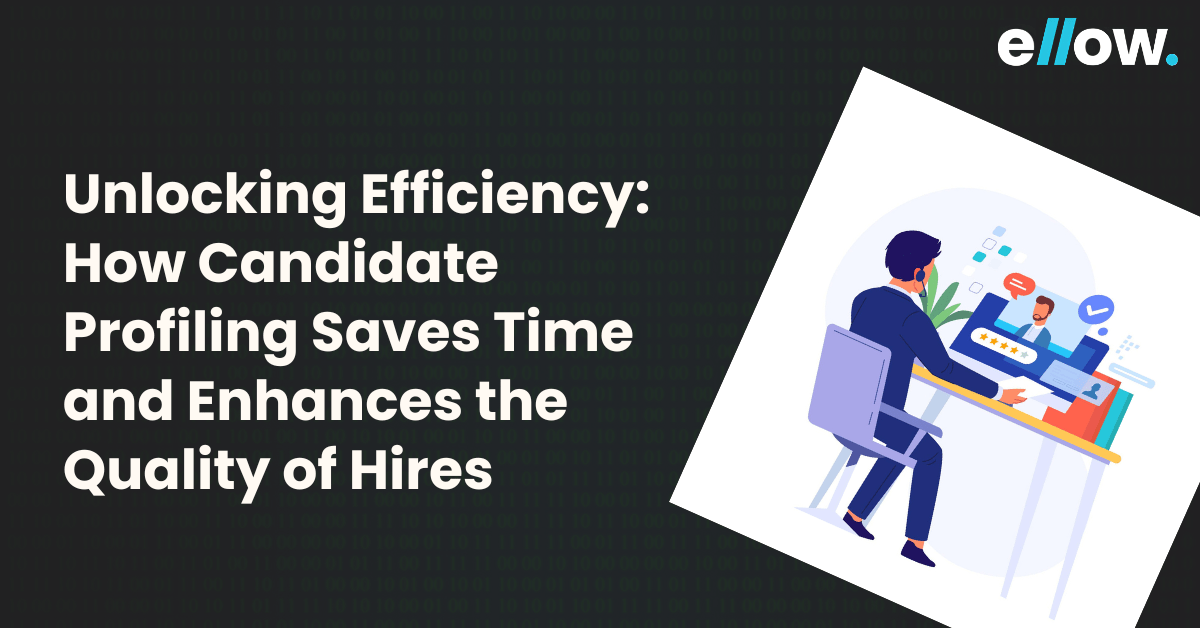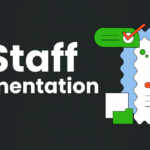Are you tired of the endless challenges of finding the perfect candidate for the ideal role? Traditional hiring methods can be time-consuming, often leading to less-than-ideal matches between candidates and positions. But what if there was a way to streamline your recruitment process, attract top-tier talent, reduce the hiring time, and ensure you’re bringing the best possible person on board? The solution lies in candidate profiling!
So, what exactly is candidate profiling? How does it revolutionize the recruitment process? And most importantly, how can you leverage its potential to elevate your hiring practices? Nearly 75% of employers have faced the costly consequences of a bad hire, highlighting the critical need for more effective recruitment strategies. According to a recent CareerBuilder survey, these missteps can significantly impact a company’s bottom line. In this article, we’ll explore how creating a detailed candidate profile can transform your recruitment efforts, leading to higher-quality hires and a better fit between candidates and job roles. Let’s dive into how candidate profiling saves time and improves hiring outcomes.
What is Candidate Profiling?
Candidate profiling is a strategic approach to recruitment that involves creating a comprehensive and detailed snapshot of the ideal candidate for a specific job role. Unlike traditional methods that might rely solely on resumes or basic qualifications, candidate profiling digs deeper. It considers the candidate’s professional background, skills, experiences, and personal attributes, all tailored to match the specific requirements of the role.
A well-crafted candidate profile goes beyond just listing qualifications. It provides insights into the candidate’s potential cultural fit, alignment with the organization’s values, and ability to contribute effectively to the team. By looking at the candidate as a whole, rather than just a set of skills, recruiters can make more informed decisions that lead to better long-term hires.
Benefits of Candidate Profiling
Targeted Sourcing
One of the primary benefits of candidate profiling is that it allows recruiters to focus their sourcing efforts more precisely. When you have a detailed candidate profile, you know exactly what you’re looking for in terms of skills, experiences, and qualifications. This clarity enables you to target your job postings and outreach efforts more effectively, attracting candidates who are a strong fit for the role. As a result, you spend less time sorting through irrelevant applications and more time engaging with top-tier candidates.
Streamlined Screening Process
The screening process is often one of the most time-consuming stages of recruitment. With a well-defined candidate profile, this process becomes much more efficient. The profile provides a set of clear criteria against which you can assess candidates, making it easier to quickly determine whether a candidate possesses the essential skills and experience required for the role. This streamlining not only saves time but also ensures that only the most suitable candidates move forward in the hiring process.
Enhanced Interview Process
Interviews are a critical part of the hiring process, but they can sometimes feel like a shot in the dark if not properly guided. Candidate profiling enhances the interview process by providing a framework for asking targeted and relevant questions. With a detailed profile in hand, interviewers can delve deeper into the most critical aspects of the candidate’s experience, skills, and personality. This focus allows for a more thorough assessment of technical competencies, cultural fit, work style, and problem-solving abilities—elements that are all crucial for success in the role.
Informed Hiring Decisions
Hiring decisions can be complex, especially when there are multiple strong candidates to choose from. Candidate profiling acts as a benchmark throughout the decision-making process. It offers a clear and objective picture of what the ideal candidate looks like, making it easier to compare applicants against these criteria. This data-driven approach reduces the likelihood of bias and ensures that the final decision is based on who best meets the defined needs of the role and the organization. Ultimately, this leads to better hires who are more likely to succeed and stay with the company longer.
Reduced Time-to-Hire
The traditional recruitment process can be lengthy, often dragging on for weeks or even months. Candidate profiling helps to significantly reduce the time it takes to hire by streamlining various stages of the process. By attracting the right talent from the outset through targeted sourcing and making screening and interviewing more efficient, candidate profiling cuts down on the overall time required to fill a position. This acceleration is crucial in competitive job markets where top talent is often off the market quickly.
Strengthened Employer Branding
A well-crafted candidate profile does more than just attract the right talent—it also enhances your employer branding. By clearly outlining the qualities and attributes you seek in a candidate, you are effectively showcasing your company’s culture, values, and what it takes to succeed within your organization. This transparency not only attracts candidates who are a good cultural fit but also strengthens your company’s reputation as a desirable place to work. Over time, this can help build a more cohesive, aligned, and high-performing team.
How Candidate Profiling Saves Time in Hiring
Efficiency in Recruitment
Candidate profiling fundamentally transforms the efficiency of the recruitment process. When you start with a clear understanding of what you’re looking for, you can avoid the common pitfalls of sifting through countless unsuitable applications. This focus allows you to allocate your time and resources more effectively, ensuring that every step of the process is aligned with the end goal: finding the right candidate for the job.
Faster Candidate Assessment
Once you have a detailed candidate profile, assessing candidates becomes a much quicker process. The profile serves as a checklist, allowing you to measure applicants against a predefined set of criteria. This not only speeds up the initial screening but also makes subsequent stages, like interviewing and decision-making, more straightforward and less time-consuming.
Reduced Turnover Rates
Hiring the right candidate from the start has a profound impact on employee retention. When candidates are well-matched to both the role and the company’s culture, they are more likely to thrive and stay with the company longer. This reduces the frequency of turnover, which in turn saves time and resources that would otherwise be spent on recruiting, onboarding, and training new hires. In the long run, this stability contributes to a more productive and engaged workforce.
Steps to Create an Effective Candidate Profile
Define Job Requirements
The first step in creating an effective candidate profile is to conduct a thorough analysis of the job role. This involves identifying the specific skills, experiences, and qualifications that are necessary for success in the position. This foundation is crucial, as it ensures that the profile is aligned with the actual needs of the role.
Identify Ideal Candidate Traits
Beyond technical skills, it’s important to consider the soft skills, personality traits, and cultural attributes that are essential for thriving in your organization’s unique environment. These traits might include things like adaptability, teamwork, and communication skills—qualities that are often just as important as professional qualifications.
Gather Data
To inform the creation of the candidate profile, it’s essential to gather relevant data from a variety of sources. This can include job descriptions, input from hiring managers and team members, and industry benchmarks. The more comprehensive the data, the more accurate and effective your candidate profile will be.
Craft the Profile
With the gathered information in hand, you can begin crafting the candidate profile. This should be a detailed and compelling narrative that highlights the candidate’s strengths, experiences, and suitability for the role. The profile should include both the essential qualifications and the desired traits and attributes that will make a candidate a good fit for your company.
Review and Refine
Once the candidate profile is complete, it’s important to seek feedback from key stakeholders, such as hiring managers and team members. Their input can help refine the profile to ensure that it aligns with the hiring objectives and meets the company’s needs. Additionally, as job roles and company needs evolve, the profile should be revisited and updated regularly to remain relevant.
Conclusion
Candidate profiling is a cornerstone of modern recruitment practices, offering a strategic framework for identifying, evaluating, and selecting top talent. By creating comprehensive candidate profiles that encompass both technical qualifications and soft skills, recruiters can streamline the hiring process, improve the quality of hires, and foster a culture of excellence within their organizations. Implementing candidate profiling not only saves time but also enhances the overall effectiveness of your recruitment efforts, leading to stronger, more cohesive teams and a higher likelihood of long-term success. As you refine your recruitment strategies, consider making candidate profiling a central component to achieve better hiring outcomes and drive sustainable success in talent acquisition with ellow.io.
FAQs
1. What is candidate profiling?
Candidate profiling is a strategic recruitment tool that involves creating a detailed overview of the ideal candidate for a specific role. It includes not just qualifications and experience but also personality traits, cultural fit, and career aspirations to ensure the best match for the position and the organization.
2. How does candidate profiling improve hiring decisions?
By providing a clear benchmark of what the ideal candidate should look like, candidate profiling allows recruiters to make more informed, data-driven decisions. It reduces bias and ensures that the final hire aligns closely with the role's requirements and the company's values.
3. Can candidate profiling reduce the time it takes to hire?
Yes, candidate profiling streamlines various stages of the hiring process, from sourcing and screening to interviewing. By targeting only the most suitable candidates, it significantly reduces the overall time to hire.
4. How does candidate profiling impact employee retention?
When candidates are carefully matched to both the role and the company culture through profiling, they are more likely to be satisfied and stay longer with the company. This reduces turnover rates and the costs associated with frequent rehiring.
5. What are the key elements of a strong candidate profile?
A strong candidate profile includes essential skills and experience, desired qualifications, work style, personality traits, and alignment with company values and goals. These elements together provide a comprehensive view of the ideal candidate for the job.






